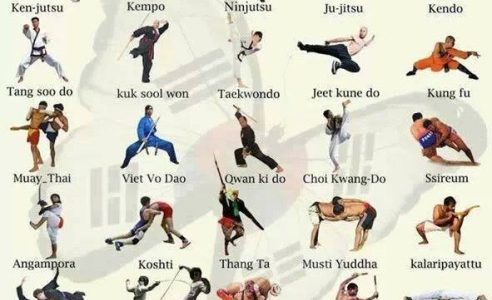Secret Differences Between Typical Martial Arts And Modern Fight Sports: A Comprehensive Evaluation
Secret Differences Between Typical Martial Arts And Modern Fight Sports: A Comprehensive Evaluation
Blog Article
Short Article Writer-Skovbjerg Finnegan
When you think of martial arts, do you lean a lot more toward the typical methods or the modern-day battle sporting activities? Each course uses unique benefits and experiences, shaped by their philosophies and training methods. martial arts for toddlers near me and self-control, while contemporary fight sports focus on competition and performance. Recognizing these differences can lead you in picking the ideal technique for your journey. But exactly how do these distinctions show up in training and philosophy?
The Philosophy and History Behind Typical Martial arts
While many individuals associate martial arts with physical combat, the approach and history behind traditional martial arts run much deeper. go to this website 'll locate that these disciplines stress individual development, technique, and regard.
Originating from old practices, traditional martial arts were often developed for Self-Defense and spiritual advancement. They personify concepts such as equilibrium, consistency, and self-constraint, leading practitioners beyond mere combating abilities.
As you train, you'll not only discover methods but likewise gain understandings into the culture and worths that formed these arts. The rituals and practices, typically given via generations, cultivate a feeling of neighborhood and belonging.
The Affordable Nature of Modern Fight Sports
Modern fight sporting activities have transformed the landscape of martial arts into an extremely competitive field, where athletes take on in a test of skill, approach, and endurance.
You'll notice that competitions are usually arranged with stringent regulations and laws, making certain justice and security. These occasions draw in huge audiences, sustaining the excitement and strength of matchups.
Athletes educate carefully, not just for physical expertise however additionally for psychological strength, understanding that every detail counts in the ring. The adrenaline thrill during competitors is apparent, as competitors press their limitations to claim victory.
Fans value the athleticism and artistry included, making modern battle sports a thrilling spectacle that continues to progress and captivate enthusiasts worldwide.
Training Techniques and Methods: A Relative Analysis
The affordable environment of contemporary fight sporting activities demands innovative training techniques that vary dramatically from typical martial arts.
In https://cons-of-martial-arts-for76531.blogproducer.com/42193931/comprehending-the-different-belt-levels-in-taekwondo-vital-info-to-familiarize-yourself-with -day training, you'll concentrate on specific techniques, competing, and conditioning, usually using drills that mimic genuine battle situations. You'll see a focus on quantifiable efficiency and constant competition to analyze your skills.
On the other hand, conventional martial arts prioritize kinds, katas, and thoughtful trainings, often highlighting self-control and regard over competition.
Training is generally less intense and might include repetitive practice as opposed to real-time sparring.
While both methods build skill and health and fitness, modern-day fight sporting activities provide an extra dynamic and versatile training environment, preparing you for immediate obstacles in the ring or cage.
Select the course that lines up with your objectives and passions.
Verdict
In picking in between standard martial arts and modern-day fight sports, it actually comes down to what you value the majority of. If you're seeking individual growth, discipline, and a sense of neighborhood, conventional arts may be your finest fit. However if you flourish on competitors and real-time challenges, modern-day battle sports could be the way to go. Inevitably, both courses offer special benefits, so it's all about aligning your training with your personal objectives and rate of interests.
